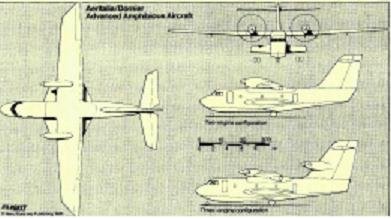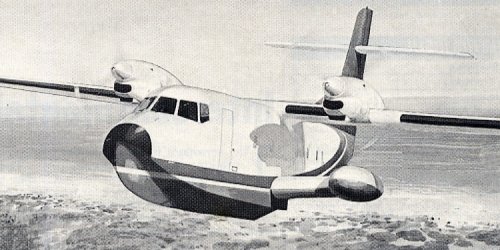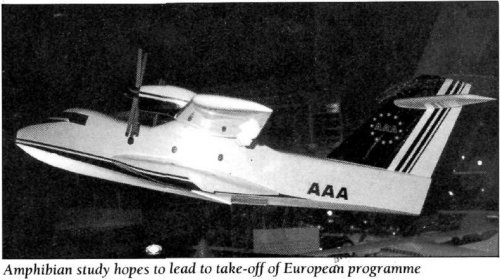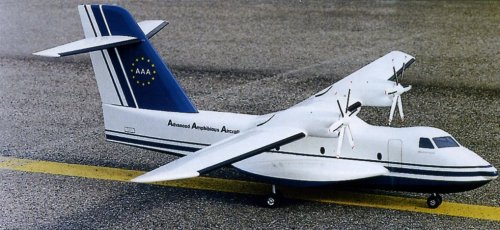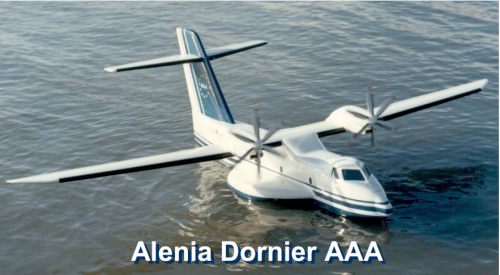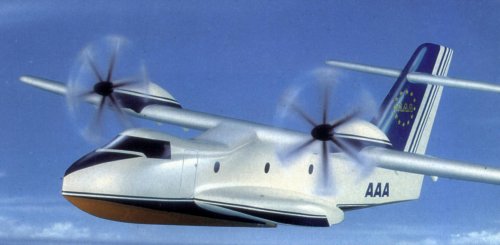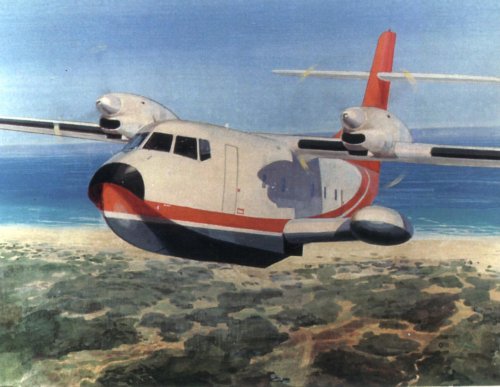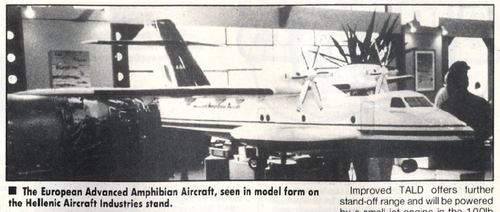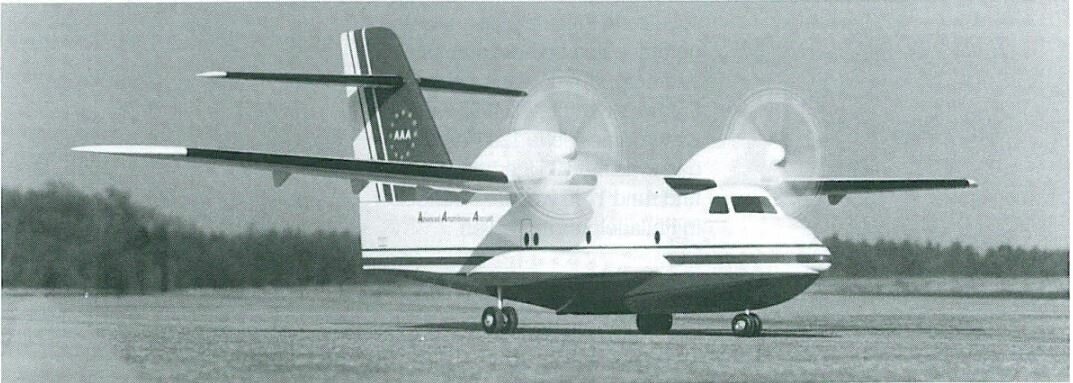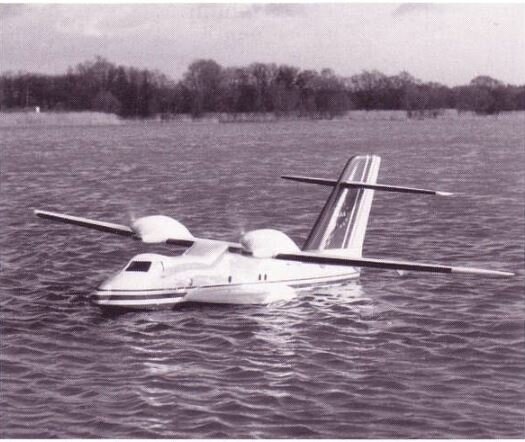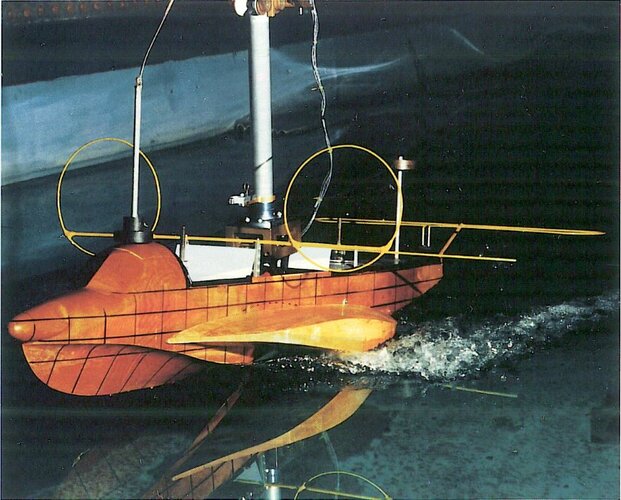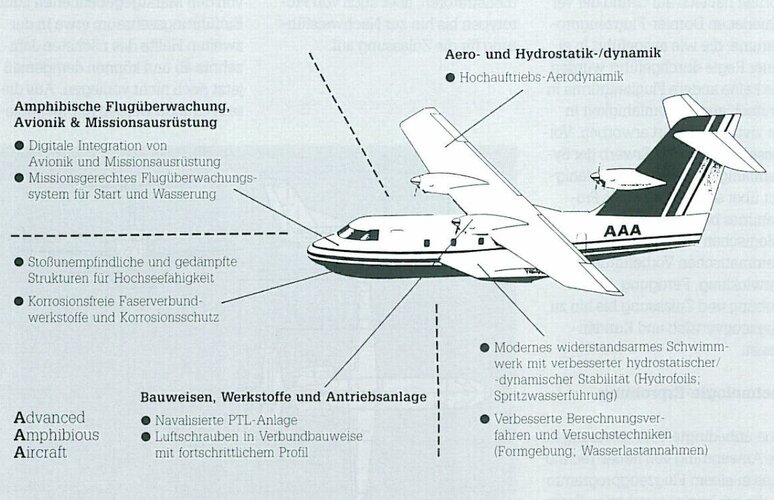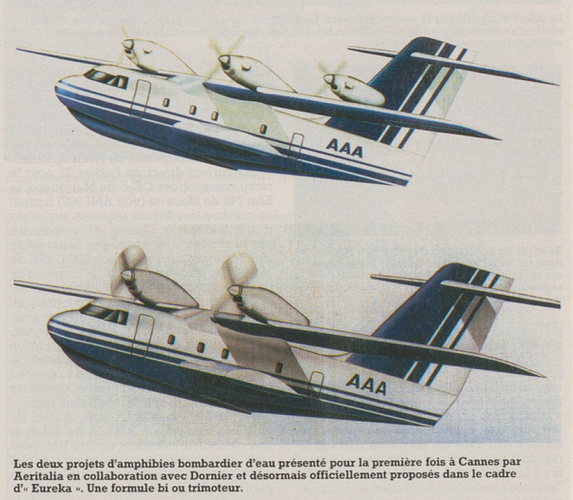Advanced Amphibious Aircraft (AAA)
Type: Twin-turboprop multi-purpose amphibian; primary roles firefighting, search and rescue, maritime and anti-pollution surveillance, and transport.
Program: Definition phase by Alenia and Dornier started April 1, 1988; research and technology phase led by Alenia began June 1, 1990 and continuing to September 1992; HAI (Greece) and Per Udsen (Denmark) became partners; SOKO (Yugoslavia) and OGM (Portugal) are associates. Dornier (Deutsche Aerospace) no longer active in this program in 1992. First flight was expected 1995 and cerification was expected at the end of 1997.
Customers: Estimated market for up to 300 such aircraft by year 2010.
Design features: High-lift aerodynamics; low-drag hull; scoop filling of water tanks; rough-sea capability; should land in sea state 4 with 37 passengers.
Flight controls: Mission-tailored flight management system.
Structure: Extensive use of corrosion-proof composites.
Landing gear: Retractable tricycle type; with twin wheels on each unit; mainwheels retract into large sponsons on fuselage sides.
Power plant: Two 2,013 kW (2,700 shp) class turboprops; four-blade propellers with advanced aerofoil section and composite blades.
Dimensions external (provisional)
Wing span: 33.67 m (110 ft 5.5 in)
Length of fuselage: 22.00 m (72 ft 2 in)
Height overall: 9.73 m (30 ft 11 in)
Areas
Wings, gross: 98.00 sq m (1,054.9 sq ft)
Weights and loadings (estimated)
Typical operating weight empty: 12,200 kg (26,896 lb)
Max disposable payload: 8,000 kg (17,637 lb)
Max T-O weight from water: 19,400 kg (42,770 lb)
Max T-O weight from land: 23,000 kg (50,705 lb)
Performance (estimated)
(at 23,000 kg; 50,705 lb max T-O weight except where indicated)
Max cruising speed at 3,050 m (10,000 ft),ISA, at 90% max T-O weight: 230 knots (426 km/h; 264 mph)
Stalling speed, flaps down, AUW of 18,000 kg (39,683 lb): 60 knots (102 km/h; 69 mph) EAS
Max rate of climb as S/L, ISA: 518 m (1,700 ft)/min
T-O run from land at S/L, ISA: 840 m (2,756 ft)
FAR Pt 25 balanced T-O field length: 1,300 m (4,265 ft)
Typical range with 4,000 kg (8,318 lb) payload: 1,133 nm (2,100 km; 1,305 miles)
Ferry range: 2,347 nm (4.350 km; 2,703 miles)
Text source: Lambert, Mark ed. Jane's All the World's Aircraft 1992-1993 Jane's Information Group Ltd. 1992 pp. 89-90.

